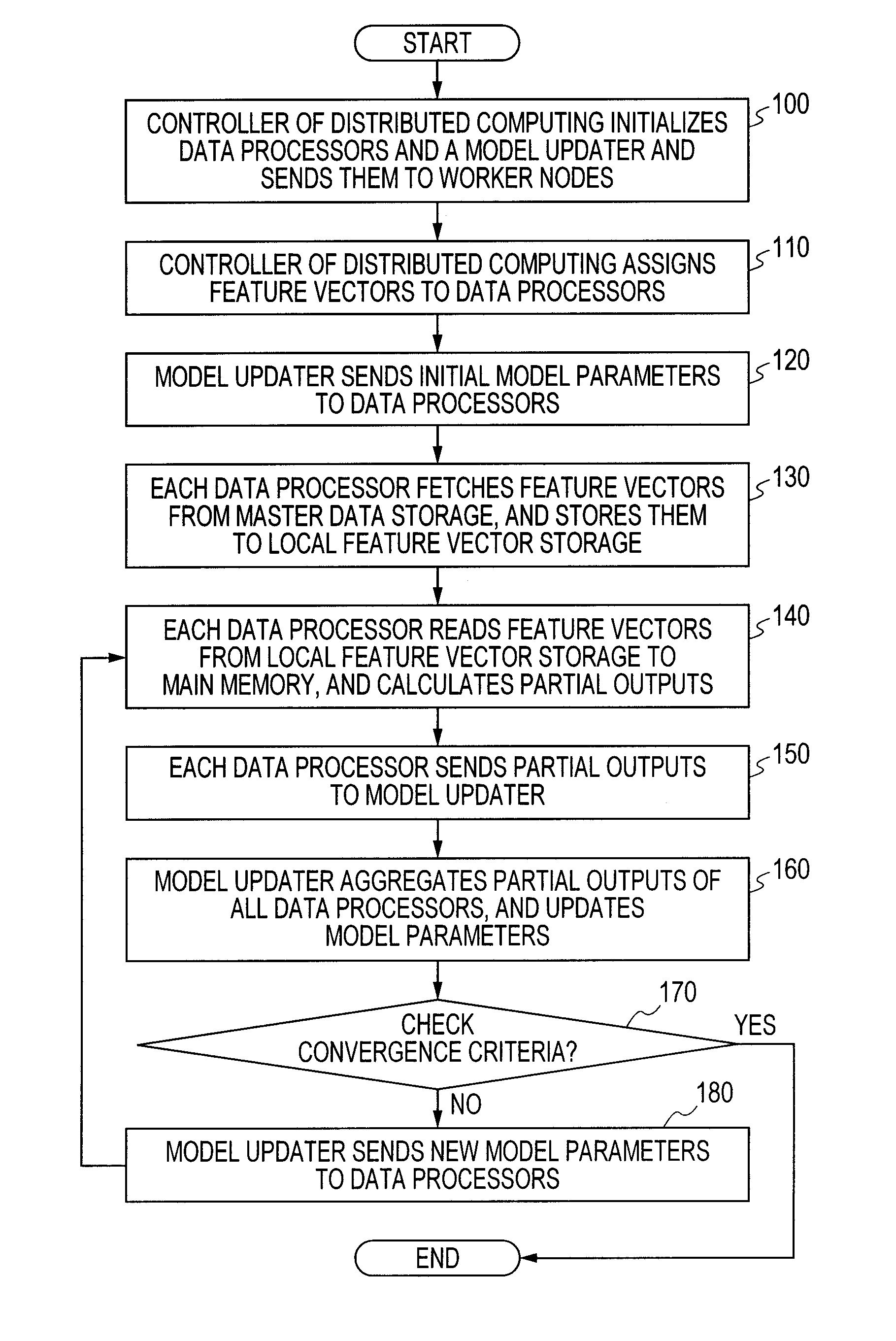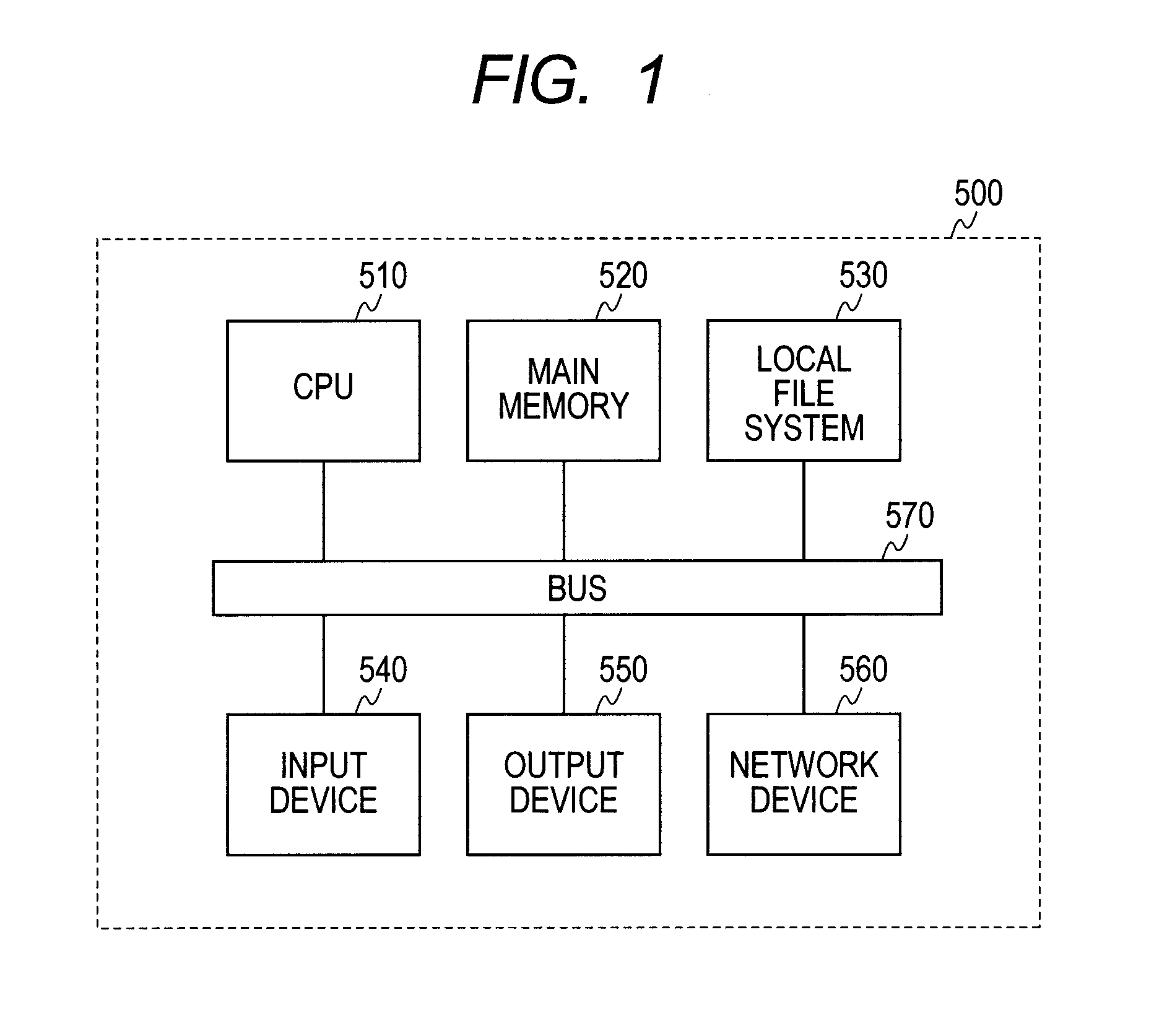Distributed computing system for parallel machine learning
a distributed computing and machine learning technology, applied in machine learning, analogue and hybrid computing, instruments, etc., can solve the problems of reducing the execution rate, reducing the processing speed, and difficulty in memory use, so as to achieve efficient execution and efficient treatment
- Summary
- Abstract
- Description
- Claims
- Application Information
AI Technical Summary
Benefits of technology
Problems solved by technology
Method used
Image
Examples
first embodiment
[0036]FIG. 1 is a block diagram of a computer used for a distributed computer system according to the present invention. A computer 500 used in the distributed computer system assumes a general-purpose computer 500 illustrated in FIG. 1, and specifically comprises of a PC server. The PC server includes a central processing unit (CPU) 510, a main memory 520, a local file system 530, an input device 540, an output device 550, a network device 560, and a bus 570. The respective devices from the CPU 510 to the network device 560 are connected by the bus 570. When the computer 500 is operated from a remote over a network, the input device 540 and the output device 550 can be omitted. Also, each of the local file systems 530 is directed to a rewritable storage area incorporated into the computer 500 or connected externally, and specifically, a storage such as a hard disk drive (HDD), a solid state drive (SSD), or a RAM disk.
[0037]Hereinafter, machine learning algorithms to which the prese...
second embodiment
[0115]Subsequently, a second embodiment of the present invention will be described. A configuration of a distributed computer system used in the second embodiment is identical with that in the first embodiment.
[0116]The transmission of the learning results in the data processors 210 to the model updater 240, and the integration of the learning results in the model updater 240 are different from those in the first embodiment. In the second embodiment, only the feature vectors on the main memory 520 is used for the learning process during the learning process in the data processors 210. When the learning process of the feature vectors on the main memory 520 is completed, the partial results are sent to the model updater 240. In this sending, the data processors 210 load the unprocessed feature vectors in the feature vector storages 220 of the local file systems 530 into the main memory 520, and replace the feature vectors.
[0117]Through the above processing, a wait time for communicati...
third embodiment
[0120]Subsequently, a third embodiment of the present invention will be described. An ensemble learning is known as one machine learning technique. The ensemble learning is a learning technique of creating multiple independent models and integrating the models together. When the ensemble learning is used, even if the learning algorithms are not parallelized, the construction of the independent learning models can be conducted in parallel. It is assumed that the respective ensemble techniques are implemented on the present invention. The configuration of the distributed computer system according to the third embodiment is identical with that of the first embodiment. In conducting the ensemble learning, the learning data is fixed to the data processors 210, and only the models are moved whereby the communication traffic of the feature vectors can be reduced. Hereinafter, only differences between the first embodiment and the third embodiment will be described.
[0121]It is assumed that m...
PUM
 Login to View More
Login to View More Abstract
Description
Claims
Application Information
 Login to View More
Login to View More - R&D
- Intellectual Property
- Life Sciences
- Materials
- Tech Scout
- Unparalleled Data Quality
- Higher Quality Content
- 60% Fewer Hallucinations
Browse by: Latest US Patents, China's latest patents, Technical Efficacy Thesaurus, Application Domain, Technology Topic, Popular Technical Reports.
© 2025 PatSnap. All rights reserved.Legal|Privacy policy|Modern Slavery Act Transparency Statement|Sitemap|About US| Contact US: help@patsnap.com



